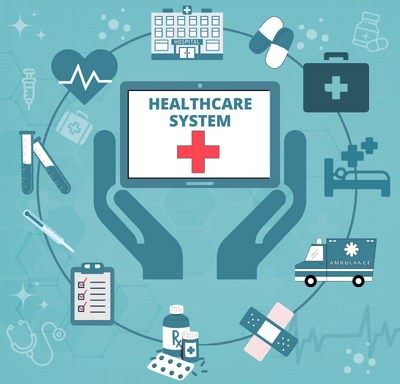
About us
Our Services
Our Expertise
Our Experience
Follow us
Why e2logy?
- We strive to provide superior customer service and ensure that every client is completely satisfied with our work.
- Our engineers are trustworthy, dedicated, and experienced and will go the extra mile to solve your IT issues.
- We are committed to delivering outstanding, cutting-edge IT solutions that add real value that goes beyond what is expected.

Medical Device Connectivity and its Benefits

EHR interoperability has been discussed ad nauseam in the medical community and our industry. Although medical technology and the machines that power it has advanced, EHR compatibility issues persist despite the advances. As a result, most EHR vendors deliver software that has data-sharing capabilities only within their products. Software is not the only issue with data sharing. It has been quite some time since medical professionals could connect to their medical devices.
EHRs are not the only devices or software that struggle to integrate patient information into a single device. Primary and emergency care hospitals also struggle with this issue. Additionally, hardware developers usually only create solutions to facilitate communication between their own devices and do not put much thought into compatibility with software developed by other developers.
Why do medical devices need to be connected?
The key to ensuring that a connected medical device operates smoothly is the combination of cutting-edge hardware with innovative software. In a typical workflow, the device receives inputs from the patient about their ailments, prompting the device to search for the nearest match. If the patient is matched, an orphan drug prescription will be issued. The user would have to provide a sample of the specific metric in such cases, and the matching process would have to be repeated. In both cases, the patient is directed to book an appointment with a licensed medical practitioner to be examined.
Connected medical devices: The key technology opportunities
In the world of connected medical devices, technologies are being integrated throughout the device’s lifecycle: from the point of manufacture, through maintenance, and finally to its use. It has been nearly two decades since consumer-facing healthcare was disrupted by technology. Consequently, technologies such as Artificial Intelligence (AI) and Machine Learning (ML) can unlock new possibilities in the connected healthcare space.
Benefits of medical device connectivity
For an effective and efficient treatment process, it is imperative to have access to accurate, up-to-date patient data. The vital signs can be useful for diagnosing and treating patients, as they provide important information about patient health. If patient assessments are not documented correctly and promptly, even the most meticulous assessments are not useful.
Many times, information is not entered into the patient’s record but is written on scraps of paper. Data entry is delayed, and the quality and integrity of data are compromised. Documentation becomes inconsistent as a result. Providing doctors with timely, accurate, and complete patient assessments with medical device connectivity can alleviate these pain points.
1. Charting patients automatically
Data can be synchronized between the device and the patient record to save time for nursing staff. The staff can spend more time on direct patient care rather than transcribing notes or trying to catch up on paperwork at the end of their shifts. Additionally, information is now available faster, in a more real-time manner. Usually, information comes directly from the device, so there is no need for translation, so it is more accurate.
2. Safety for patients
By connecting two-way devices and the EMR, key quality and safety measures can be implemented more easily. Automated checks could be performed on IV drug prescriptions to ensure they are appropriate for the dose and drug being administered, for example, reducing drug-related errors.
3. Reducing errors
A patient’s blood pressure cannot be recorded accurately, which can lead to incorrect medication dosage, which may lead to serious health consequences. Manually entering patient data into the EMR can lead to numerous errors related to patient identification, transcription, and omission. An estimated ten to twenty-five percent of patient information are incorrect when transcribed manually. Automated workflows involving medical devices reduce transcription errors by eliminating manual data collection and reporting.
4. Creating a data base
The building of a data foundation begins with device connectivity. A range of quality improvement programs, from assessing how often patients are receiving their prescribed treatments, can be conducted using de-identified data collected from devices.
5. Monitor from a distance
Using medical device connectivity, chronic illnesses such as diabetes and hypertension can be remotely monitored. Patients’ data can be transmitted from their homes to their caregivers, enhancing the effectiveness of treatment plans and providing a 360-degree view of how the patient is doing.
6. Saving time
A healthcare provider can save time by not having to manually enter patient data into a paper chart with access to current information about the patient. Healthcare providers can focus on the most important thing – the patient – by connecting their medical devices to the Internet.
7. Security and privacy of data
Privacy is one of the major concerns associated with connected devices. Manufacturers are hesitant to implement cloud-connected medical devices because of security and privacy concerns. A guideline has been developed by the FDA and other regulatory agencies to resolve these concerns. The manufacturer does not need to repeat the approval process if it has simplified the process for security upgrades on devices. The downside is that FDA certification and retesting will still need to take place.
Conclusion
The new standards are not here yet at the time when we most need them, but it can still be comforting to know that the issue is being addressed and decision-makers are considering the issue. When medical devices are connected, doctors can access the latest patient diagnostics information on demand, reducing errors and omissions in the process. A few good policies and pieces of hardware can go a long way toward improved interoperability inside your facility until larger changes are made. This results in clinicians spending more time at the bedside, making patient care more effective.













